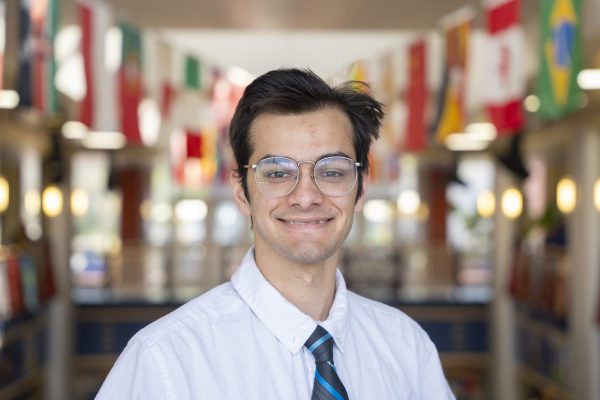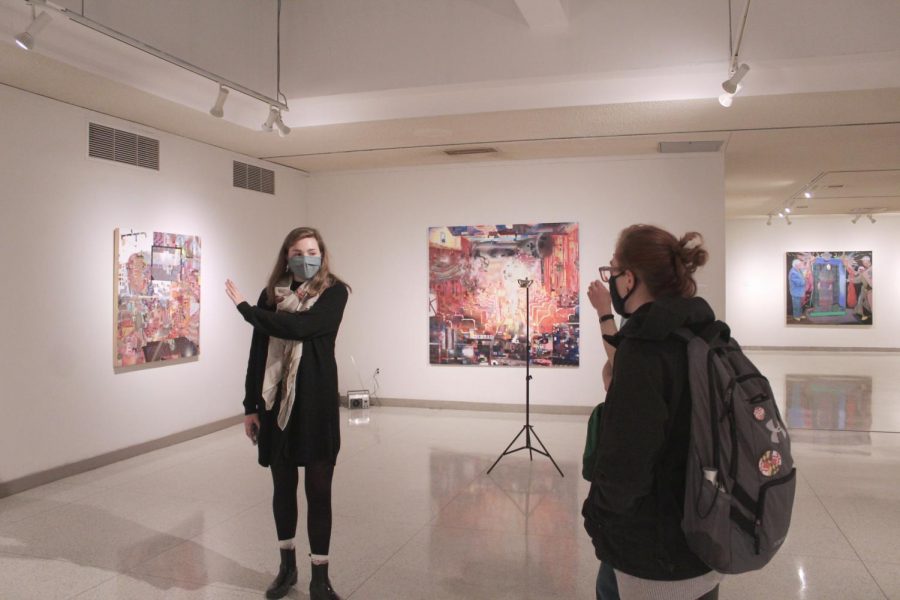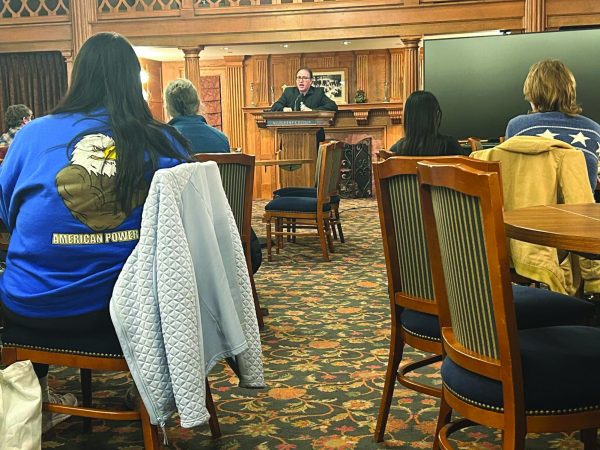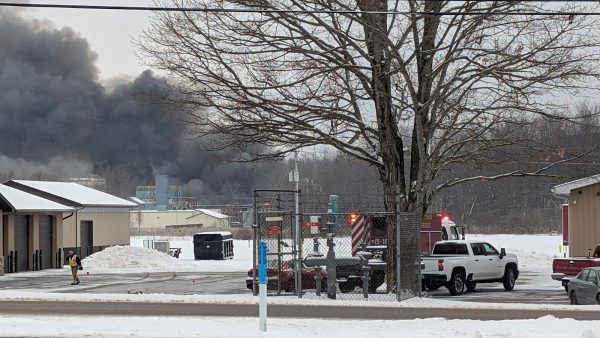‘Performance Anxiety’ explores digitization in a modern pandemic
In the colloquial sense the concept of performance anxiety is known to be akin to stage fright, being anxious to perform, but the Performance Anxiety Art Exhibition flipped that definition on its head through its showcasing of different artists and their mediums.
The Performance Anxiety Art Exhibition, is located on the first floor of Doane Hall of Art on March 3, was put together by Paula Burleigh, assistant professor of art history, and artist and Professor Eric D. Charlton, along with six student assistants: Sophie Thompson, ’21, Claire Klima, ’22, Garrett Baker, ’23, Finn Dugan, ’22, Erin Magnus,’23 and K.M. Htet, ’22.
“Historically I think that term ‘performance anxiety refers to being afraid to perform in front of people, so like stage fright, but in this culture I think performance anxiety is kind of flipped; we’re not anxious about performing, we’re performing because of our anxieties,” said Burleigh.
The Gallery was inspired by the conflation of philosopher Byung-Chul Han’s ideas and the experiences of most people during the COVID-19 pandemic, those of shrinking from the real world into the digital one. Influenced by the study of his work, Burleigh and Charlton proposed this art exhibition, inviting two other artists — Taha Heydari and Wednesday Kim — in addition to Charlton to participate.
The exhibition opens into a large white space with vibrant colors cutting through and eliminating the continuity of the normally-polished space. Art from those featured rests dispersed throughout the room, while eerie and odd sounds fill the space from stereos and boomboxes. The “smiles” are pointed at screens showing Wednesday Kim’s art and the paintings and sculptures of Taha Heydari and Eric D. Charlton. The smiles resemble dentures of differing colors and textures at different heights, staring and smiling at their fellow art pieces. Htet explained that the smiles act as a “surrogate audience,” and seek to take the place of the people who can’t be there, grinning awkwardly at the art, unsure of what else to do.
Burleigh contextualized the work of Kim, which deals in part with the exhaustion of always performing online and the isolation that comes with it — something education communities have become very accustomed to.
“While these situations (of exhaustion and isolation) become more pronounced during the pandemic, we live in a digital culture,” Burleigh said, “These are issues that really transcend the pandemic … I think anyone — people in Meadville, people elsewhere — can really recognize the pressure to put yourself online … and how that pressure might actually be really damaging and might make us feel inadequate in some ways.”
Htet expressed that it was sad that the opening could not be celebrated by the community, but commented on how the limited opening allows the gallery to have more intimate guided tours of the space that provide more information and understanding of the art.
“It’s kind of a wake-up call as we put everything online,” Burleigh said. “Because of the pandemic, we’re putting curator lead tours online, we have videos, we have installation photos; we actually need to do that for every show anyway, because we need to be able to engage wider audiences who can’t necessarily come to Allegheny when we have an exhibition, but they can still experience our shows. So that’s for us something that’s really going to continue beyond the pandemic I think — that level of virtual engagement and documentation online.”
Guillaume Loinard, ’24, a gallery visitor, said that he was very appreciative of the way the gallery was presented and how it felt like, “the art had real meaning behind it.”
Htet’s explained that the value was to be found in the thinking that the art provoked, sharing his personal opinion that anything that makes you think is art. Htet also shared that students will not all get the same things out of visiting the gallery
“As long as you find a single thing worth thinking about while going through the gallery, I think it’s a benefit for you,” Htet said.
Performance Anxiety will close on April 10. Next, the gallery will host a student exhibit showcasing the work of Allegheny juniors and seniors.

Sami Mirza is a senior from many different places. He is majoring in International Studies with a focus on the Middle East and North Africa and minor in...












